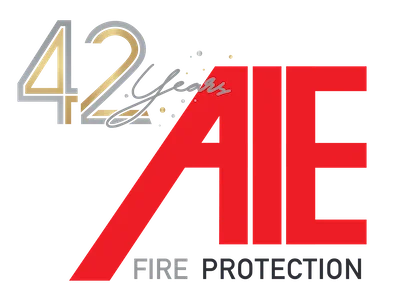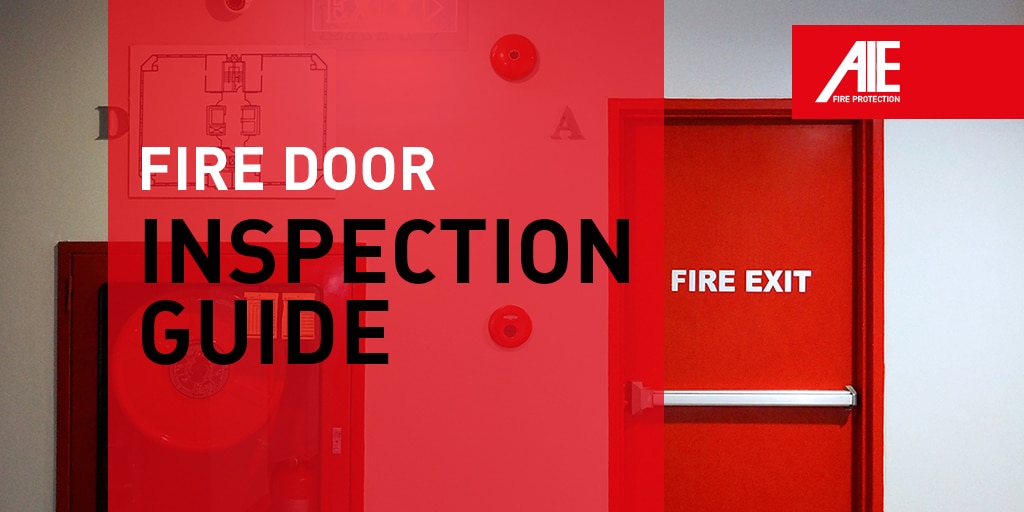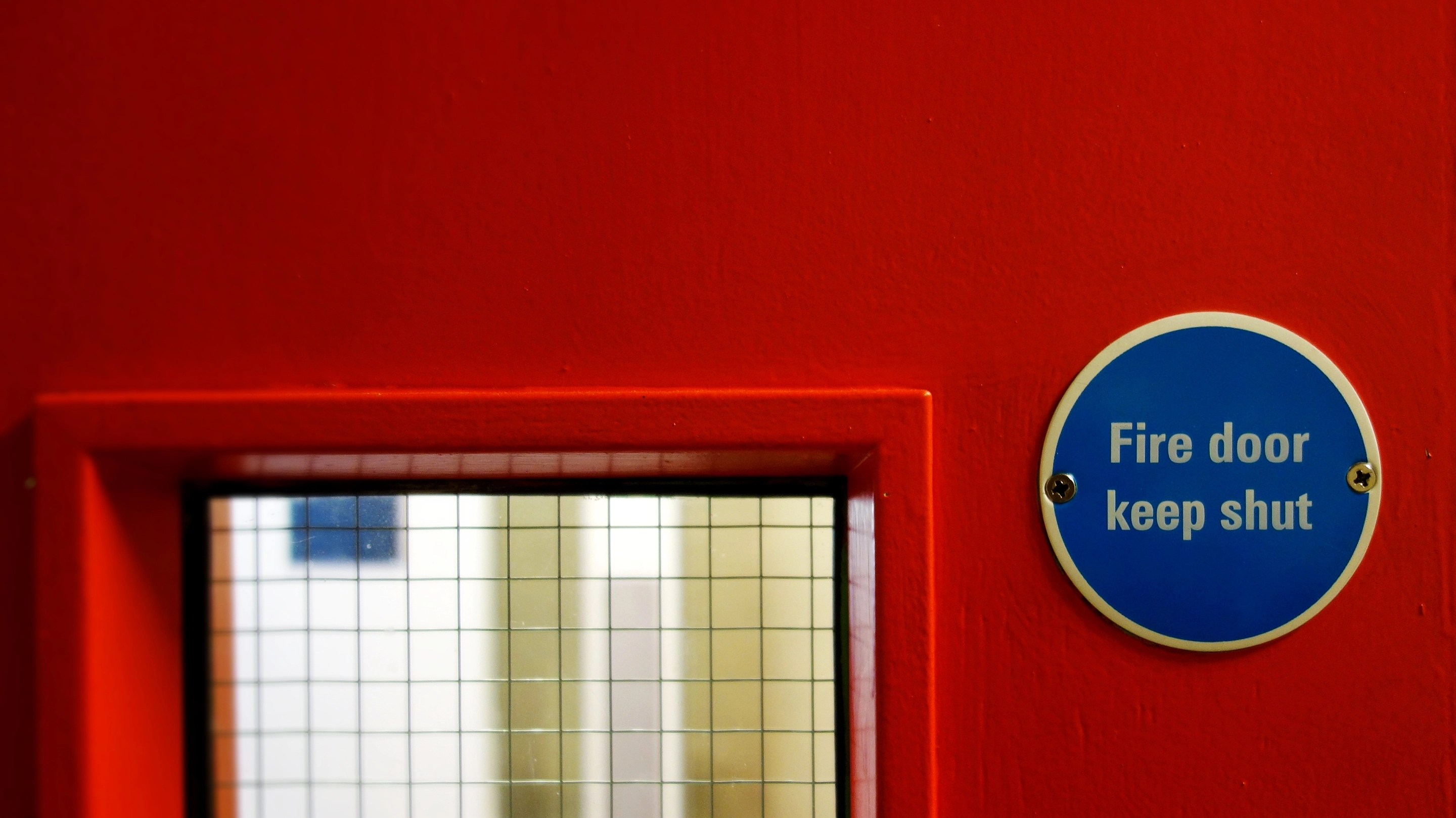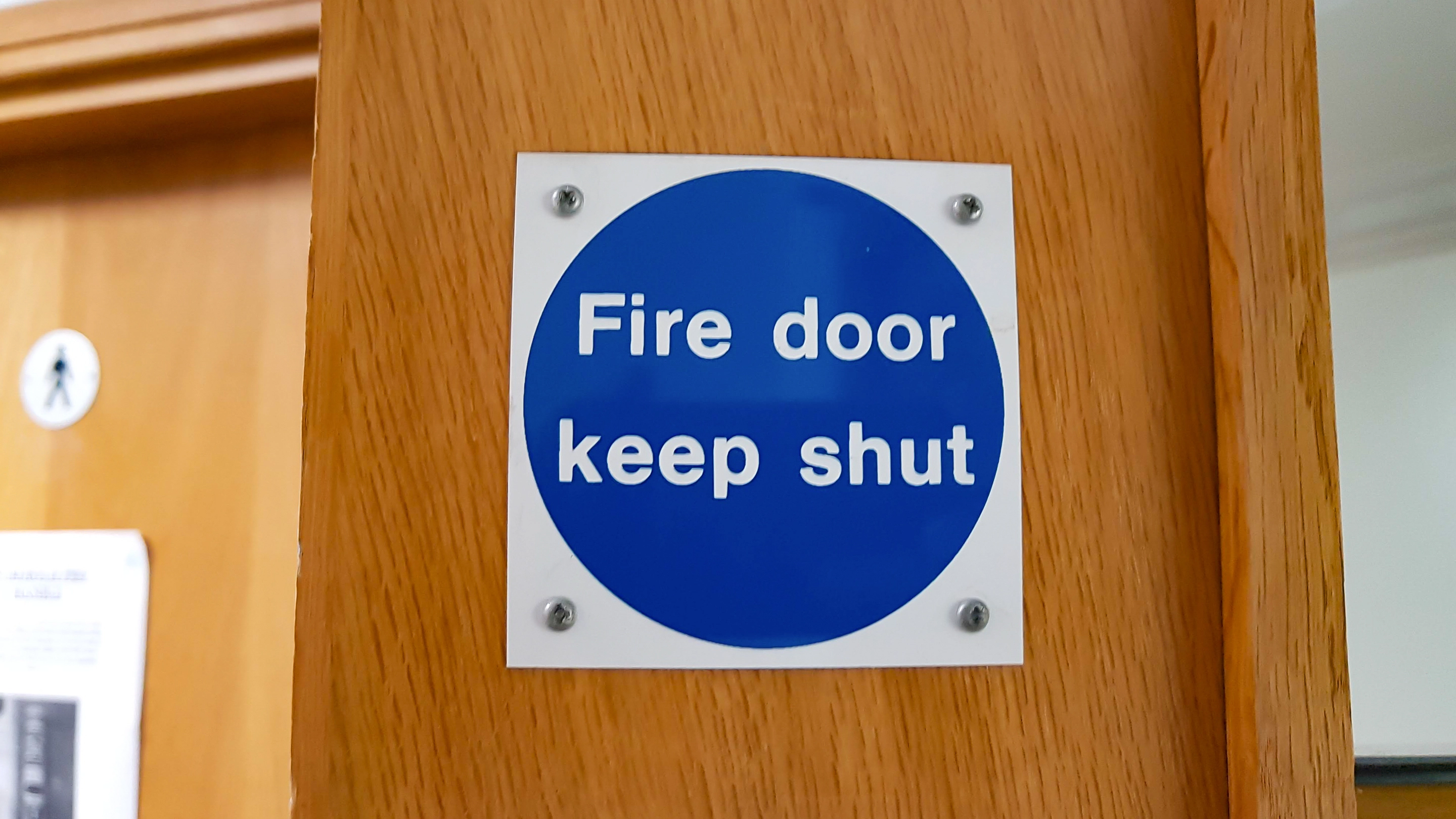There is often confusion when it comes to commercial fire door inspections. Over the years, the requirements have been somewhat unclear, leaving facility managers unsure of their internal responsibilities and how often fire doors need to be inspected. AIE’s fire protection experts are here to help.
Fire Door Inspection Requirements
With the latest edition of National Fire Protection Association NFPA 80: Standard for Fire Doors and Other Opening Protectives, there is a nationwide, annual inspection mandate for commercial fire doors and their components, improving the reliability of evacuation and overall life safety of occupants. You must be up-to-date on fire door inspection requirements and how these affect your business.
Who Performs Annual Fire Door Inspections?
As a facility manager, safety engineer, or building owner, you are responsible for making sure annual fire door inspections and testing are conducted and documented per NFPA. Regular fire door inspection frequency, for example monthly or bi-monthly, can be performed by an employee who is educated and trained in fire door components, operations, and maintenance requirements. However, a licensed fire protection company must perform your annual fire door inspections.
You can conveniently add these inspections to your annual fire sprinkler, fire suppression, and/or fire alarm systems inspections and benefit from the peace of mind of knowing all fire doors have been inspected and tested by professionals. You will also receive certification to prove fire doors are code compliant for local fire authorities.
How to Keep Fire Doors Operational All Year Long
Just as with your company’s other fire protection equipment, an ounce of prevention and proactive maintenance goes a long way. If fire doors and their components are maintained throughout the year, in an emergency, occupants will have a better chance of a smooth evacuation, and you have a better chance of passing those impromptu local AHJ fire inspections.
Here are the “Top 10 Fire Door Safety and Inspection Best Practices” you and your staff can perform regularly to keep your buildings’ fire doors operational all year long.
- Clear the doorway: Keep all fire doors and other evacuation pathways clear of debris, stock, and anything that would prohibit an easy exit.
- Look for visible labels: Make sure fire door labels are visible and legible to know when you need to inspect.
- Keep exit signs lit: Check fire door exit signs to ensure they are brightly lit and not blocked by anything.
- Lubricate the hinges: Lubricate door hinges on a regular schedule to ensure doors open easily.
- Clean the hinges: Keep hinges free of compacted dirt and dust. We recommend cleaning your fire door hinges monthly to ensure there’s no build-up.
- Check fire door frames and hardware: Ensure door frames, latches, hinges, and non-combustible thresholds are aligned, fully working, and secure, with no visible signs of damage.
- Check fire doors close fully: Make sure the self-closing device is operational and that the door closes completely from the full-open position.
- Ensure inactive leaf closes first: If a coordinator is installed, ensure the inactive leaf closes before the active leaf.
- Add nothing to the doors: Do not allow anything (extra hardware, door stops) to be installed or modified on a fire door. This will void the designation of the fire door and become a costly code violation.
- Verify tight door seals: Verify all seals and edging are tight and the material is flexible. Hardened seals will not form a proper suction.
Overall trends for nonresidential building fires and losses for the 10-year period of 2009 to 2018 show a 26% increase in nonresidential fires and a 16% increase in deaths. Fire doors are critical to improving these numbers. − National Fire Incident Reporting System (NFIRS)
Multiple Fire Standards to Follow
As a facility or safety manager, it is a great idea to have the NPFA 80 Standards on-hand and follow the guidelines listed. However, when it comes to fire door and other openings inspections, there are also the NFPA 101 Life Safety Code Standards and the International Fire Code (IFC) regulations that must be considered. Many states have adopted the IFC regulations as their individual state’s fire code, which includes fire doors and smoke doors to be maintained in accordance with the NFPA 80 and NFPA 105 Standard – the Standard for Smoke Door Assemblies and Other Opening Protectives.
As you can see, annual fire door inspections and maintenance can become complicated. When you have an experienced fire protection company, such as AIE, handle all required NFPA, IFC, and other AHJ fire protection inspections at your multi-site facilities, you get the benefit of knowledge and experience that can’t be matched by a non-professional who only does one inspection per year.
AIE also uses electronic documentation for every fire door inspection and service visit, which makes following the NFPA/IFC documentation requirements a snap. This allows for easy reference should you be asked by a fire marshal or other authority to produce proof of inspections, repairs, and maintenance.
AIE is unique in many ways – we are a family-owned company with nationwide fire protection services, in-house, licensed engineers, and decades of expertise in commercial fire protection. We always put excellence in customer care first.
Not Sure What a Fire Door Looks Like?
This may sound unusual, but it is very common for employees and building occupants to have no idea which doors are fire doors. Look for these key indicators that a door is a fire door.

- Self-closing
- Ball-bearing hinges
- Wire-mesh glass
- A label on the edge of the door between the top and center hinges
Fire Door Inspections & Maintenance: A Route to Life Safety
Fire doors are an important part of your buildings’ overall fire protection and life safety plan. Now, you and your team have a guide to understanding how often fire doors need to be inspected and the 10 Fire Door Safety and Inspection Best Practices, so you can enjoy the security of knowing you’re doing your best to keep people safe from fire.
When you work with AIE for annual inspections of your fire doors, smoke doors, and other openings, as well as any maintenance and repairs needed – fire door regulations suddenly become a much easier fire code to follow.
Since 1983, AIE has been helping companies just like yours with all fire protection and life safety inspections, maintenance, and repairs. We would be honored to have the opportunity to help you keep your people safe and your business profitable. Contact us today for a no-obligation conversation about your nationwide, multi-location fired door inspections. 800-892-9863




Recent Comments